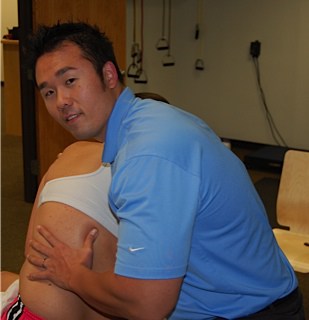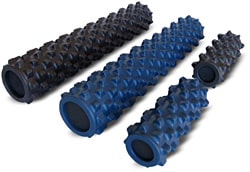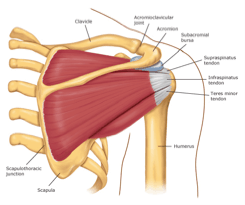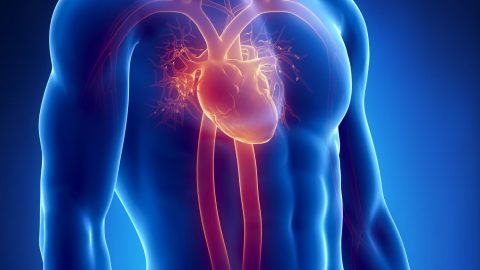A Common Cause of Pain For Fitness Oriented People And Athletes Alike
Tennis elbow or Lateral epicondylitis is inflammation, soreness, or pain on the outside of the upper arm near the elbow1. Golfer’s elbow or Medial epicondylitis is pain and inflammation on the inner side of your elbow2.
How the injury occurs:
Both of these injuries are caused by repetitive use of extensor and/or flexor muscles of the forearm. Over time, inflammation, scar tissue, and small tears develop in the origin tendon of the muscle, which leads to irritation and pain when the muscle is used.
Lateral epicondylitis occurs in weightlifters usually due to wrist extension during pressing exercises such as barbell press, where the hands are stabilized, but the elbow has the tendency to move if technique is poor. Medial epicondylitis can occur with improper and/or excessive curling of the wrist during a bicep exercise. Both can also occur in occupation with consistent wrist rotation; like construction, painters, keyboard and mouse use, plumbers, and many more.
Symptoms:
For a Tennis Elbow, pain is usually present when you extend your wrist; the pain may or may not radiate from the elbow to your forearm. Occasionally, numbness and/or weakness may be associated. A lifter may notice it more when performing a barbell exercise. There is also some tenderness within the elbow when you press on the area.
For golfer’s elbow, pain is present when you flex your wrist, squeeze your hand, swing a club, plus many more. Tenderness may also be present. The skin may also feel warm to the touch for both conditions.
Diagnosis:
Usually, your medical history and physical exam will provide enough information for a diagnosis of epicondylitis.
An X-ray can be helpful to rule out other possible causes of elbow pain.
Treatment:
- Rest: Stop performing activities that will aggravate the pain, it takes time for the tears to heal. Premature return to activity may prolong the symptoms.
- Ice: Apply an ice pack to the affected area for 15 to 20 minutes, 3-4 times per day for several days. Use a thin towel to protect the skin.
- Over the counter (OTC) pain reliever: Try ibuprofen, naproxen, or acetaminophen, these will help to lower the inflammation.
- Injection: Cortisone or similar injection can also reduce the pain and swelling.
- Myofascial Release: Active Release Technique (ART), Graston, FAKTR-ISTM, Kinesio Tape, have proven to help in reducing inflammation and pain with little to no side effects.
- Tennis or Elbow Brace: Purpose of the brace is to reduce pressure on the injured tendon by creating a temporary muscle origin. Apply the brace 3 to 4 inch from the tip of the elbow, you may need to wear the brace for up to 6 weeks.
It is not uncommon for elbow pain to last 6 to 12 weeks. With treatment, the pain may resolve faster.
Prevention:
These types of elbow injuries can be a part of a bigger picture, what appears to be an elbow injury may start from weak core stability and lack of strength. For a lifter, it means to take a step back and see the overall picture, when attempting more weight do you feel that your core is stable? Are the elbows stable and not flailing around? Are the wrists in severe flexion and extension?
Once the injury is healed, consider incorporating core stabilizing exercises and gradually increase the weight of a lift to emphasize form and technique. Weight train with a wrist wraps to limit flexion and extension. Also train using oversized grip (Fat Gripz).
Bio:

Dr. Chiang, DC, CCSP received his Doctorate of Chiropractic degree from Palmer College of Chiropractic Florida. While at school, he was an active member of the Sports Chiropractic Council. He also participated in Clinic Aboard where he and a group of future chiropractors went to Morocco and provided chiropractic care to the underprivileged and the underserved.
Dr. Chiang has a strong interest and knowledge base in athletic and overuse injuries, and enjoys taking on challenging cases. He believes in a well-rounded, evidence-base, patient-centered approach to care and utilizes an array of techniques, including: chiropractic adjustments, soft-tissue/myofascial mobilization, exercise, education, nutritional, and lifestyle modifications. Some of the soft tissue therapies include Active Release Techniques, Gua Sha, Kinesio-Tape, and Graston Technique. Furthermore, he constantly strives to better serve his patients by increasing his knowledge base through continuing education courses, workshops and conferences. Dr. Peter is a Certified Chiropractic Sports Physician (CCSP), which focuses on working with athletes and sports rehabilitation.
Dr. Chiang enjoys treating patients of all ages for various neuro-musculoskeletal conditions ranging from acute injuries, to repetitive strain injuries, to supportive and wellness care. He owns and runs North Eastern Chiropractic in Framingham MA with his wife. He can be contact via his web site: North Eastern Chiropractic
- http://www.ncbi.nlm.nih.gov/pubmedhealth/PMH0001485
- http://www.mayoclinic.com/health/golfers-elbow/DS00713

Dr. Chiang, DC, CCSP received his Doctorate of Chiropractic degree from Palmer College of Chiropractic Florida. While at school, he was an active member of the Sports Chiropractic Council. He also participated in Clinic Aboard where he and a group of future chiropractors went to Morocco and provided chiropractic care to the underprivileged and the underserved.
Dr. Chiang has a strong interest and knowledge base in athletic and overuse injuries, and enjoys taking on challenging cases. He believes in a well-rounded, evidence-base, patient-centered approach to care and utilizes an array of techniques, including: chiropractic adjustments, soft-tissue/myofascial mobilization, exercise, education, nutritional, and lifestyle modifications. Some of the soft tissue therapies include Active Release Techniques, Gua Sha, Kinesio-Tape, and Graston Technique. Furthermore, he constantly strives to better serve his patients by increasing his knowledge base through continuing education courses, workshops and conferences. Dr. Peter is a Certified Chiropractic Sports Physician (CCSP), which focuses on working with athletes and sports rehabilitation.
Dr. Chiang enjoys treating patients of all ages for various neuro-musculoskeletal conditions ranging from acute injuries, to repetitive strain injuries, to supportive and wellness care. He owns and runs North Eastern Chiropractic in Framingham MA with his wife. He can be contact via his web site.






I personally and unfortunatelly suffer from both..
Golfers when i curl with a straight bar and tennis usually when i do tricep exercises, especially skull crushers..
I replaced the straight bar with the EZ bar and the skull crushers for the narrow grip press for 6 months, it helped a lot during that time, but now im trying to get back to those exercises again and i get the same pain, is this normal even after 6 months ?
Hey Will,
Dr. Chiang completely missed the theraputic mark in his article: “A Common Cause of Pain…”
As a DC, he should know that cortisone injections supress the immune system, place an individual into adrenal hyperfunction (a catabolic state) and represent a recipe for future disaster via repeat injuries…
That the R.I.C.E. protocol was obslete the moment it was concieved and has never been shown to promote or benefit long-term healing…
That bracing and resting an injury destabilizes the affected area and sets up for future instability and injury…
That O.T.C. and prescription NASIDS supress the very inflammatory response that is required to initiate cytokine response and subsequent healing…
So Will, dump this Allopath masquerading as a DC and run a series on Prolo Therapy. I think you will be doing your readers a real service…
Neil
Neil, so you essentially dump on everything Dr Chaing has to say on the topic then go onto suggest Prolo Therapy, which lacks solid data – and or data that exists is mixed at best – and attack all alloptah docs to boot. I have nothing against Allopath docs for one thing, some are great, some are not, but I make no general statements about them. Two, Dr Chaing mixes what’s SOC and more “alternative” methods via his DC practice, and does a fine job of it. Many of your statements lack hard data to support it, such as over general statement on cortical steroid injections, which when/if used correctly, have helped people and can have value.
Me, I’d consider it last resort, but I have seen it break the local inflammatory issues, allowing the person to heal up and move on. Seen it too many times to dismiss that therapy where appropriate.
I doubt Dr. Chaing is a big fan of cortical steroid injections either, but it’s still an option that in some cases makes sense, so he’s mentioned it. He’d also not recommend long term used of NASIDS, but may recommend during acute phases.
Now, do you have some good published modern human data on Prolo Therapy to supply that would be convincing enough to justify a series on the topic? Reviews I have read found data conflicting at best, so I’m still waiting to see something convincing there.
I have myself recommended it to a few people as something to explore, but it’s far from well established therapy at this time, and the cutting edge of healing connective tissue injuries, is injecting growth factors into the area to heal connective tissue (see my other posts on that topic) which I hope is a SOC therapy in the near future personally.
Please show more respect to my authors on this web page, and add info of value we can all build on vs. insults.
Thanx 🙂
Neil, I stand behind everything I have said. I am not a fan of cortisone shots, but they are warranted on some patients, not all. If Prolo-Therapy works for you, use it. My goal is to get patients back to do what they enjoy doing pain free. If you find licking a frog therapeutic to your injury, do it. (Note: DO NOT lick a frog, the evidence is not there).
As for Prolo-Therapy, I’ll do a quick synpase:
Prolotherapy is an injection of dextrose (sugar water) into a chronic injured site, to cause localized inflammation and increase blood supply and promote healing.
Does it work? For some it may, for some it may not.
The costs are (estimated):
Initial consult $50 – $150
Injection $100 – $250
Follow up $50 – $100
Average treatment is 4-6 injections for an area, some could be as high as 10. Do the math.
Dr Chiang, I wanted to second the suggestion of Fat Gripz. I just got over MONTHS of brachialis tendonitis that I think I triggered trying to go too heavy on straight bar curls. It made any pulling movement impossible for me. Even lifting a grocery knob or pulling a doorknob. Cortisone injection worked wonders for about a month, then the pain recurred. A second shot only helped for a week. My solution was to start doing Kaatsu type training with very light dumbells and Fat Gripz. 15lbs was too light to cause pain, done hammer curl style. I also used a very slow tempo 3-0-3 until volitional failure (20-30 reps). The burn was wicked, but I think the lactic acid was therapeutic. A month later and the pain is gone. I can palpate the tendons without pain as well. I am very hesitant to go back to pulling movements, but I think I will try some light pulldowns with very strict form and limited ROM and see how that goes.. Good article, thanks.
I had the same problem, and havent gone back to the straight bar since, its been 6 months.
For me doing the hammer curls works well and also using the EZ bar instead of the straight one.
I’m not feeling like going into the cortizone solution just yet but will give the fat gripz a try and see how it goes
The worst elbow (ulna) pain I’ve experienced is from doing french presses (skull crushers) and overhead dumbbell extensions. The pain takes me completely out of the game for weeks or months. From my experience, it’s from going too heavy when your tendons don’t have a chance to grow to catch up. When there’s already a stretch on the tendon (by placing your elbow straight up) is when injury is most likely. The only way to approach these exercises is with very slow weight progression, zero “bouncing,” and slow, controlled motions. This is not a type of exercise you want to “cheat” on, even a little. The only way to recover is to give the injury lots of recovery time, and progress as mentioned above, but even twice as slowly. Thanks for the topic, Will, it’s a good one as always.
Totally agree with you in terms of it happening when youre going a litlle heavy on it (maybe its an exercise that is meant to be done for light weight high rep). in terms of form and momentum i’ve allways have done it perfectly and still it happens to me and cant get rid of it, even without doing the exercise for 6 months i still have it if i try again, even with light weight..
I see you have been thru it and have been able to heal it, have you done anything else other that rest to treat it ? im open to suggestions because, altough not as much, it affects many other of my lifts too 🙁
I haven’t pushed it since the injury. I gave it lots of time, which was as excruciating as the pain itself, worked into it slowly, and stopped around 60% 1RM. I’m really afraid to push it, regardless of recovery time or frequency of going 100%. I really baby the elbows now, since like you said, so many other movements rely on them. In addition, I don’t want to develop chronic joint problems later on because I forced my way through it.
That’s exactly where im at, up to 60% i can still do it without it getting worse but any more than that and the pain is back.. and youre also totally right when you say that it hurts just as much not being able to do it..
I’ll keep replacing the skulls for the narrow grip bench press because my body responds better to heavier load exercises but the lack of variety annoys me..
I’m also concerned about longevity so i prefer going slowly and being able to keep lifting than working thru it and having to stop.. but its been 6 months and it just doesnt go away 🙁
Thx 4 the feedback.
Cheers
I had a bad case of it in my right elbow. In my job I work with Physical Therapists and Excercise Physiologists their advice to me was right along the lines of what Dr. Chiang has said. I got the wraps I put on my forearms to create a temporary mucles origin and that worked wonders. When I coupled the wraps with Myofascial Release that is when I saw HUGE healing benefits. It seemed counter intuitive to do the Myofascial Release on something that already hurt, but once I realized that I was actually breaking up scar tissue and did it regularly I started mending quickly.
I had tennis elbow for over a year. I cured it in about a month, with a topical anti inflammatory called penetrex. Awesome reviews on amazon.
Interesting article. I am fortunate in that I have never suffered from elbow inflamation. However, recently my hands have become numb and tingling after a heavy arm workout. I’m wondering if muscles swollen from a workout can pinch the radial nerve as it passes through the elbow joint?
Any thoughts?